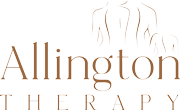When viewed from the side, there should be normal kyphotic and lordotic curves of the spine.
When viewed from the back, the spine should be relatively straight and not curving from side to side.Scoliosis is when the spine is abnormally deviated by more than 10 degrees to the side with rotation of the vertebrae within the curve. Scoliosis can happen at any age, but most commonly develops during early adolescence, with the rapid growth of the body. Its cause is generally classified as idiopathic (no identifiable cause), congenital or neuromuscular.
Mild scoliosis can be asymptomatic and common as a perfect straight spine does not exist.
An X-ray is the primary diagnostic tool for scoliosis. In establishing a diagnosis of scoliosis, the doctor measures the degree of spinal curvature (COB angle).
A few questions concerning scoliosis:
· Can I do sports with a scoliosis? You should always check with a specialist what sports can be done before, during, and after treatment. Most studies support physical exercise to strengthen the muscles, prevent stiffness and support overall health.
· Will scoliosis always require surgery? For actively growing children with scoliosis curves between 20 and 50 degrees, bracing is recommended. Surgery is the only option for large curves at high risk of progression. 2-3% of the population will have scoliosis and 10% of them may require surgery. A 50 degrees curve is the typical indicator for surgery because the curve is at a high risk of progressing into adulthood.
· Can Osteopathy help me? Osteopathy addresses the body as a whole, rather than only focussing on the curve of the spine, it can support people with scoliosis in their overall function and range of motion. Osteopathy will not “correct” or fix scoliosis or make the curve disappear; however, osteopathy can help address compensation within the body, manage pain levels and give mobility and strengthening exercises.

Leave A Comment